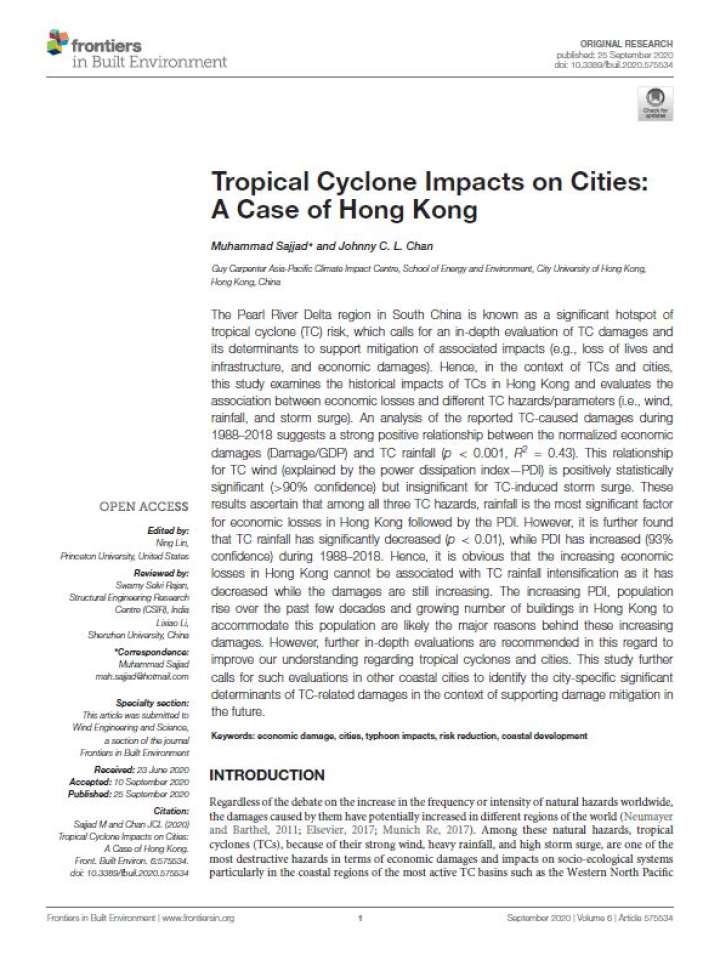Tropical cyclone impacts on cities: a case of Hong Kong
This study examines the historical impacts of Tropical Cyclones (TCs) in Hong Kong and evaluates the association between economic losses and different TC hazards/parameters (i.e., wind, rainfall, and storm surge). The Pearl River Delta region in South China is known as a significant hotspot of tropical cyclone (TC) risk, which calls for an in-depth evaluation of TC damages and its determinants to support mitigation of associated impacts (e.g., loss of lives and infrastructure, and economic damages). An analysis of the reported TC-caused damages during 1988–2018 suggests a strong positive relationship between the normalized economic damages (Damage/GDP) and TC rainfall (p < 0.001, R2 = 0.43). This relationship for TC wind (explained by the power dissipation index—PDI) is positively statistically significant (>90% confidence) but insignificant for TC-induced storm surge.
These results ascertain that among all three TC hazards, rainfall is the most significant factor for economic losses in Hong Kong followed by the PDI. However, it is further found that TC rainfall has significantly decreased (p < 0.01), while PDI has increased (93% confidence) during 1988–2018. Hence, it is obvious that the increasing economic losses in Hong Kong cannot be associated with TC rainfall intensification as it has decreased while the damages are still increasing. The increasing PDI, population rise over the past few decades and growing number of buildings in Hong Kong to accommodate this population are likely the major reasons behind these increasing damages. However, further in-depth evaluations are recommended in this regard to improve our understanding regarding tropical cyclones and cities. This study further calls for such evaluations in other coastal cities to identify the city-specific significant determinants of TC-related damages in the context of supporting damage mitigation in the future.
Explore further
